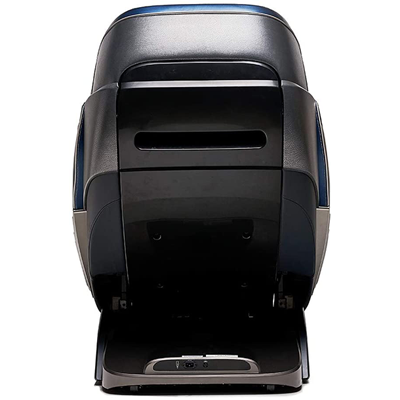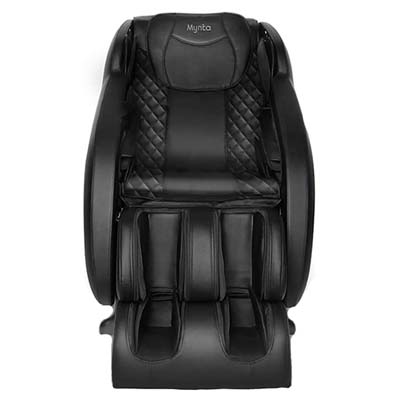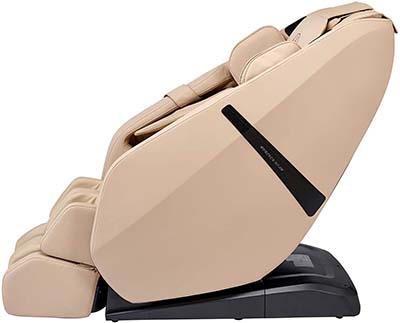So, you bought a massage chair, didn’t you? Congratulations! You’re probably enjoying soothing, relaxing massages on a regular basis, and you’re almost certainly not spending nearly as much time running to the chiropractor’s office, which means you’re saving money, too.
That’s great news!
If all you’re doing, though, is plugging the machine in and using it on a regular basis, you’re setting yourself up for trouble in the long run. Massage Chairs, like all other machinery, require regular cleaning and maintenance to keep them running well over the long term.
And let’s face it, even a modestly priced chair is a hefty investment, so you want it to last as long as possible.
If that’s what has brought you to this site and this page, in particular, you’re in luck! We’ll step you through how to clean and care for your trusty chariot, covering the basics of massage chair maintenance and cleaning. Let’s jump right in and get to it!
Massage Chair Maintenance 101—Your User Manual Is Your Best Friend
This probably goes without saying, but for the sake of completeness, we’re going to say it anyway. Where massage chair maintenance is concerned, the first, best thing you can do is keep the user manual that came with your chair somewhere close at hand, so you can flip it open and look through it any time you need to.

While every massage chair is different, every massage chair manual we’ve ever seen has at least a short section on care and maintenance, and most have a listing of common error codes you may see when something goes wrong.
That’s your go-to source, always. The user manual should be considered the final word on any maintenance topic.
That said, there are a few basic things you need to do, in addition to referring to the manual any time you think there might be a problem. The three biggest and best things you can do are:
Choose A Permanent Home For Your Chair Carefully
Location, location, location! It matters more than you think. The overwhelming majority of the massage chairs on the market today are upholstered in PU. PU is inexpensive, but it’s also not very durable, and exposure to direct sunlight will obliterate your upholstery in short order.
To avoid that, or at least minimize the impact of the sun’s rays, think carefully about where you put your chair and be sure it’s not in direct sunlight.
If you want to position the chair next to a window, just be sure you keep the curtains or blinds closed as much as possible to limit the amount of direct sun the upholstery gets.
Use Your Chair Often
There are a couple of reasons for this. First, have you ever driven past an abandoned building around town?
If so, you’ve almost certainly noticed how quickly they start showing their age. Buildings that are constantly in use don’t age as quickly—same thing with your massage chair. Regular use will help it last longer.

The specific reason for that is this: if you’re using your chair on a regular basis, you really get to know the ins and outs of it. You know that the funny little clicking sound it makes when the heat comes on is totally normal and nothing to worry about, but…
If you suddenly start to hear a new sound, you notice it right away because you use it all the time, and this sound invades your ear. It’s an unwelcome guest, an interloper, and it may mean that there’s something wrong.
If you’re not using your chair on a regular basis, though, you won’t have that level of familiarity with its normal operation, and stuff like that could easily be missed.
Regular Cleanings
In the world of massage chair maintenance, this is huge because every time you clean the chair, you have the opportunity to do an in-depth visual inspection. And since you’re doing it on a regular basis, you’ll be able to spot potential problems right away.
Maybe a wire is getting frayed due to the way the chair is reclining. Maybe there’s a rip in the upholstery at the bottom of the footwell that has allowed some debris to get wedged under one of the foot rollers and is causing the motor to strain.
These things are easy to fix but only if you take the time to regularly clean and inspect your chair.
Also, note that cleanings take two forms: a light, surface cleaning—which should be done every couple of weeks—and a deeper cleaning, which should be done every couple of months.
Given that the vast majority of the massage chairs on the market today are upholstered in PU, most of the time, a quick wipe down with a damp cloth is all the cleaning those chairs need.

Naturally, though, you want to check your manual to see exactly what your chair is upholstered in because if you’ve got one of the handfuls of leather-upholstered massage chairs, you definitely don’t want to use too much water on your leather!
If your PU-upholstered chair has some stains that won’t come up with the damp cloth treatment, then some mild soap mixed with water and put in a spray bottle will almost certainly do the trick.
When it comes to leather massage chair cleaning, the process isn’t markedly different from the cleaning process you use on all your other leather furniture.
You’ll want to sweep and vacuum the larger pieces of debris up first (same with your PU-clad chair if you see any debris that’s too big for the damp cloth to handle), then wipe it down with a microfiber cloth. This will remove most of the dirt and debris.
If you need a more thorough cleaning, use a very lightly damp cloth with a small amount of gentle soap. And then, immediately after the cleaning, buff the leather dry with your microfiber cloth so the water doesn’t remain on the upholstery.
For those periodic deep cleanings, regardless of what type of upholstery your chair has, you’ll want to break the vacuum out and attach your crevice tool, so you can really get into all the nooks and crannies.

Also, be sure to remove any pads or panels that can be removed so you can vacuum inside and underneath those items. Here, you’re also performing that visual inspection we talked about earlier. You want to be very familiar with the way everything is supposed to look “under the hood,” so to speak, so you can spot anything that’s out of the ordinary.
Once the vacuuming is done, then you’ll apply the cloth (damp and soapy for PU, dry microfiber for leather) and see how far that gets you. When you’re happy with the cleaning, then, if you’ve got leather upholstery, you’ll want to apply a modest amount of leather oil to the upholstery to keep it supple.
It’s worth mentioning that some, but not all, massage chairs have cushions or pillows that can be detached completely from the chair.
If your chair has removable pieces, then you’re better off taking them off to clean them away from the chair. That way, you don’t risk knocking any of the debris on the chair into the machinery or getting any of the cleaners into the inner workings of the chair where it doesn’t belong.
Some (a very few) of these removable bits are even machine washable, but again—check your manual to confirm this. And if there’s any doubt whatsoever, don’t toss anything part of your massage chair’s upholstery into the wash.

If you have confirmed that a given component is machine washable, then for goodness sake, don’t put it in the dryer! Doing so may cause it to shrink, and then, that’s it. You’ll never get it back on the chair again.
Just let it air dry out of direct sunlight, and don’t put any part of your massage chair back on until it is completely dry. The goal, after all, is massage chair maintenance, and that will surely shorten its life!
Conclusion
Honestly, the central component of massage chair care is mindfulness. Be aware of what’s going on with your chair. When you see something on it, clean it right away.
When you hear a noise you’re not accustomed to hearing, check your manual first to see if you can figure out what’s going on, and if you can’t, call for service.
The faster you spot a problem, the faster you fix it, and all else being equal, little problems caught early on are much less expensive than big problems that have been allowed to linger. That’s when things can get expensive in a hurry, so don’t let it get to that point!
References and Resources:
- How to Clean Leather Couches, Chairs, and Other Furniture, Architectural Digest.
- How to Prevent Sun Damage to Leather Upholstery, Fibrenew.
- How To Remove Stains From Leather, Merry Maids.
